- Home
- Stephen Baxter
Titan Page 14
Titan Read online
Page 14
Mal was a bluff old-timer who had come in from solid-booster supplier Morton Thiokol after the Challenger accident, and he thought she was crazy. They spent a half-hour Benacerraf couldn’t really afford debating the pros and cons of the mission.
Beardsley left the room, grinning and tapping his graying temple. It was a reaction that Benacerraf figured she was going to have to get used to, and she forced a smile.
Still, Beardsley had a report in her softscreen within two days.
Beardsley had tried to devise abort options for the Titan mission.
A key objective in NASA mission planning had always been to provide abort options. And that philosophy had borne a lot of fruit. Even the use of the Lunar Module as a lifeboat, after the Apollo 13 Service Module was crippled, had been practiced on an earlier flight. After Challenger, many more abort possibilities were built into the Shuttle mission profile, particularly the ascent phase. It all increased the survivability of the flights, on paper and in practice.
The flight to Earth orbit would be no real problem; standard Shuttle abort modes would be sufficient. And after the Titan ship left orbit, firing up its Shuttle main engines, abort options were still available: for instance, if the main engines malfunctioned, they could be shut down and the smaller OMS and RCS engines used to bring the craft around a huge U-turn and back to Earth. That would work up to a point, anyhow. Once the main engines had burned for long enough to apply more deltavee than the OMS and RCS could compensate for, the crew would be committed to an interplanetary flight of some kind. But even here, aborts were possible. The craft could modify its trajectory and slingshot around Venus, back to an early rendezvous with Earth. Even a slingshot back home around Jupiter would be possible.
Of course the problems of reentry from such an interplanetary jaunt would be formidable. Beardsley figured that the Apollo Command Modules, which had been built to withstand a direct entry into Earth’s atmosphere from the Moon, would be the most survivable possibility for the crew, and he recommended strongly against weakening the Apollos’ heatshields.
It would be one hell of an abort, however, Benacerraf reflected: the round trip to Venus or Jupiter would take months, even years, during which time the crew would presumably be struggling to survive in a crippled ship.
Past Jupiter, even Beardsley could find no meaningful aborts.
She started to make contacts with other senior NASA managers.
One of the first was with the JSC director, a tough, cost-conscious woman in her sixties called Millie Rimini. Benacerraf walked up two flights of stairs to Rimini’s office, and took in Barbara Fahy to give her pitch more technical plausibility.
Rimini’s job, as Benacerraf understood it, was—post-Columbia—to manage the rundown of JSC, to complete a part of Hadamard’s greater mission. So Benacerraf pitched the Titan mission as part makework, part cosmetic. Maybe the mission would actually save some jobs, at JSC. At worst, it would create a buzz of enthusiasm and raise morale; being able to work on a new program would sweeten the pill, for many, of the transfers and early retirements and layoffs that were to come. And so on. And the same applied to all the NASA centers.
Benacerraf had run big-budget engineering projects before; she knew how these things worked. People weren’t usually selfless; people sought to achieve their own personal goals, and treated projects as an arena in which to achieve those goals. In successful projects, the goals of the key players were in line with those of the project. Thus, managers like Rimini had to see benefits for themselves in the proposal, ways they could use it to achieve their own objectives, even as the Shuttles lifted off for Saturn. It was up to Benacerraf to figure out those benefits and present them.
It took a morning to convince Rimini that they should work seriously on this.
After that, Rimini encouraged Benacerraf to take the proposal to a wider group of NASA managers. Rimini set up a meeting at Marshall Spaceflight Center, in Alabama, of senior officials from Houston, the Cape, and Marshall, and from relevant NASA internal divisions. Rimini chaired the meeting.
Benacerraf was surprised to meet some opposition from the hard-line space buffs in some of the centers. The Cape managers, primed by a sweet-talk approach by Marcus White, could see no showstopper obstacles to refurbishing a Saturn launch complex, given the time and money. And the Shuttle-C flights would just be variants on STS launch procedures they’d already run a hundred and forty-three times—simplified variants, at that. But the old guys from Marshall, with their tough, conservative, confrontational approach to engineering that dated all the way back to Wernher von Braun, were more resistant. This stuff is only one chart deep, she was told. This is all way outside the experience base. Going to Saturn with chemical technology is a spectacularly dumb thing to do. What we have to do is revive the NERVA fission rocket program, and launch a set of nuclear stages into orbit in Shuttle orbiters, and, and…
It wasn’t hard to point out that nobody was going to endorse putting a nuclear rocket through the dangers of a Shuttle launch. Or, come to that, any near-future successor to the Shuttle. And besides, a program like NERVA, shut down in 1970, would cost billions to revive, if you were going to do it cleanly.
It was true. Going to Saturn with chemical was a dumb thing to do, dumb almost to the point of infeasibility. Like exploring Antarctica in a skiff. But it was the only boat leaving port, for the foreseeable future.
Slowly the Marshall people came round.
They all agreed to work on the proposal some more; it wasn’t yet time, they concurred, to take this to Jake Hadamard.
The work went on, sometimes around the clock. Benacerraf asked Millie Rimini to chair a critical review of the proposal, at JSC. It took two days of intensive briefings. Benacerraf had steeled herself to play devil’s advocate if she had to, to make sure all the tough questions were asked and answered. She found it wasn’t necessary; there was more than enough skepticism in the air, and the two days were long and hard.
Even so, the conclusion was that there was no technical obstacle to the Saturn flight.
Still Benacerraf wasn’t satisfied.
She had Beardsley run another safety review of the proposal, and she held a further briefing with senior Shuttle program executives and representatives of the principal contractors. Later, Rimini hosted a NASA management meeting at NASA Headquarters in Washington, to go over everything one more time. Then Benacerraf held a series of smaller, informal meetings with her key players, rehearsing and rehashing the arguments…
And on, and on.
Through all this, Benacerraf planned and replanned her campaign. It was going to take eighteen months, of figuring and investigating and re-evaluating. And all the time she was consciously building momentum, the Big Mo, behind her plan, working to persuade people that, yes, they could do this thing—that they should do this thing. If NASA could send Apollo 8 around the Moon on the first manned Saturn V, then surely, after five decades of spaceflight, it could assemble the will for this one last effort…
On the whole, the response was good. But then, she hadn’t yet attempted to take the proposal outside NASA’s inner circles. And—aging and stale as they might be—most people who worked for NASA, even now, were pretty much space nuts.
NASA insiders were just the type to love crazy ideas like going to Titan. And NASA’s overenthusiasm had, she knew, caused a kind of collective lapse in good political judgment many times before. NASA insiders had a vision that the rest of the world, she told herself brutally, generally didn’t share.
And, she thought, nor did Jake Hadamard, which was why he had been appointed.
She knew that Hadamard would perceive grave risks, for the Agency and himself, in taking such an extravagant option. Giving the Shuttle orbiters to the Navy for gunnery practice was cheaper, and would cost no lives. And if failure were to come, she knew that the reaction would be that anyone should have known better than to undertake such a hubristic mission.
It would be Hadamard who would have
to answer such charges. Working out her approach to Hadamard was the key part of Benacerraf’s planning.
She moved a camp bed into her office at JSC. Sometimes, she didn’t go home to Clear Lake for days on end.
From the air, Jiang Ling thought the Houston area looked like the surface of another planet, occupied and systematically bombed, perhaps, by malevolent aliens. The coastline was riddled with bays, canals, lakes, bayous and lagoons, all filled with oily water. A perceptible smog hovered over the glittering refineries around Galveston Bay.
Her NASA host pointed out Galveston Island, where she could make out a long, clear yellow slice of coastline: evidently a fine sandy beach, with what looked like a bulky oil rig, out to sea. The NASA person told her that the rig was there to dredge up sea-bottom sand, and pump it to the shore. The beach used to be stony, and the sand was only about eleven years old! Jiang was startled by the note of pride in the woman’s voice at this comical monument.
The plane—an aging Cathay 747—began its descent.
She was bustled off the plane and processed briskly through customs. The terminal building felt cool—chill, in fact. Jiang wore only a light jacket and trousers; she wished briefly she had brought something heavier. But when she emerged from the terminal building into the full strength of the July noontime Houston sun, the heat and humidity hit her as it she’d walked into a wall. The air was tangibly moist, the light intense, great polarized sheets of it bouncing into her eyes from the soft-looking asphalt surface, and the glinting metal carapaces of the cars which clustered here.
Waiting for her was a limousine, jet black, with a big softscreen panel, bearing a message which scrolled across the doors and wing. WELCOME JIANG LING, CHINA’S NUMBER ONE SPACEWOMAN. The message was repeated in Spanish, Chinese, and English.
She clambered into the back of the limousine. It was like climbing through a long, padded corridor. There was a little drinks table, molded into the upholstery, with champagne glasses and a decanter, and there were tiny TVs and softscreens. Waiting for her was a Chinese: Xu Shiyou, a senior Party official attached to the Embassy here, who would chaperon her. He was a fat man—American-diet fat, she thought—and his bald head was a round, sleek globe. Jiang was used to such meticulous planning and control; she was prepared to accept that she was a valued asset of the Party now, who required careful management.
It was a price she would pay, as she worked her way through these ceremonial duties, en route to space once more, some time in the imagined future.
The door was closed behind her, cocooning her in a little bubble of glass and new-smelling leather upholstery. The driver was sealed off by a partition; Jiang could only make out the back of the woman’s head.
The limousine pulled away. The windows of the car were clear, but Jiang became aware of a faint rippling effect, as the landscape slid past. The glass was thick, no doubt bullet-proof. She shivered, not just from the cold. Though she had circled the Earth in the Lei Feng Number One, she had never before traveled outside China. Now she wondered how she, as her country’s first space traveler, was going to be welcomed here in the home of Glenn and Armstrong.
The airport was on the northern outskirts of the Houston conurbation, and Jiang’s limousine, at the heart of a little cluster of cars, swept down the freeway towards downtown. The traffic was heavy, the smog thick in the air.
The land was hot, flat, the conurbation sprawling. The infrastructure—the layout of the roads—was clean and functional. And yet she had an impression—not of newness—but of middle age. Much of Houston’s growth, she knew, dated back to the space program growth period of the 1960s, and the oil boom of the 1970s. But those times were decades gone, and Houston was starting to age, to slump back into the plain.
Much of the time her view was obstructed by the roadside ads—huge, colorful, many of them animated—which battered at her senses, exploiting their slivers of competitive advantage. Most of the signs and ads were in Spanish.
There were water towers on the horizon, rusted, dominating. The land was greener than she had expected, but parklike, with orderly trees and thick-bladed grass; there seemed to be water sprinklers buried everywhere, many of them in full operation even now at high noon, when much of the water would be wasted. Jiang looked at those glittering fountains, the shining green lawns, imagining the tons of water vapor being lost to the air each second, all over this baking city.
She remarked on this to Xu Shiyou. The contrast with the water shortages suffered in her own country was marked, she said severely. And it was a global problem: the growth in the population and the demands of the industrializing nations—including China—was poised to outstrip the planetary supply of fresh water which fell from the sky…
Xu smiled. “That is of course true,” he said. “But until we can build pipelines to link the aquifers of Texas with the parched gardens of Beijing, there is little we can achieve by complaining about it.”
Jiang had the disquieting sense that Xu was mocking her.
“You are nevertheless right in your perception,” said Xu Shiyou, comfortingly. He waved a hand at Houston, beyond the car window. “America is a crass, empty-headed culture. And—look at that!—in the middle of this shower of advertising, you have their God, great neon crosses and beaming preachers, sold with the same methods as hamburgers.”
She looked out of the window anew. Xu was right, she saw; the ads for hair products and soft drinks and face implants were punctuated with immense crucifixes, images of Jesus.
“Americans are free,” Xu Shiyou murmured. “No intelligent person would deny that. But freedom is the minimum. I have lived and worked here for three years, and it is obvious to me that the Americans don’t understand the world beyond their borders—that they fear it, in fact.” He looked through the window; animated electronic light glimmered in his eyes.
She stared out of the car as he lectured her. The office blocks of downtown Houston thrust out of the plain like a collection of launch gantries, gray in the mist and smog.
The Big S, JSC’s trophy Saturn V, was cordoned off from the public tours today and encased in scaffolding. Under Benacerraf’s instruction the bird was being surveyed, to see if it could indeed be made operational once more. But Marcus White had been asked to host the Chinese space girl, Jiang Ling, on her brief tour of JSC, and he couldn’t think of a better item to show her. So he got hold of a couple of hard hats and escorted Jiang inside the fenced-off rectangle that contained the booster.
Besides, he wanted to see the Big S for himself. He figured he may as well combine this makeweight ex-astronaut public relations chore with a little useful work.
The two of them walked along the three hundred and sixty feet of the fallen white-and-black-painted rocket, from its escape tower and Apollo capsule—both dummies—past the widening cylinders of the third and second stages, all the way to the gaping mouths of the five big F-1 engines of the huge first stage. The Saturn V—AS-514, built and ready to fly a late J-series Apollo mission to the Moon—was lying on its side, its stages and components separated. This was so the engines and other details of the mid-stages could be viewed, but it looked, White thought, as if the booster had shattered into cylindrical fragments on hitting the ground.
After three decades on the grass, the aging of the Saturn was obvious. He could make out corrosion, cobwebs laced across the big wheeled A-frames which pinned the booster to the ground. The Stars and Stripes painted on the side of the second stage, the hydrogen-oxygen S-II, was washed out, with big red stripes of paint running down over the white hull. There was even lichen, growing on the fabric parts of the rocket engines.
They are not looking after this old lady well, he thought.
They weren’t alone in here; workers from JSC’s Plant Engineering Division were moving around the rocket, laboring through their detailed survey. One of them, attached to ropes like a mountaineer, was walking along the top of the big S-IC first stage, taking samples of the skin up there.
; Jiang stood, slim and composed, looking up at the pressurization tanks of the second stage’s five J-2 engines, big silver spheres which glowed in the diffuse Houston sunlight. She said, “It is beautiful.” She smiled.
“Yeah,” White growled. “But the damn space program was more than a series of photo-calls.”
“Was it?” Jiang looked sad. “But this creature, General White, is a dream of the 1950s. So crude!—a painted monster of rivets and bolts and gloss paint—”
“To me,” White said, “it’s not rivets and bolts and paint. This baby was designed to fly to the Moon. But it’s having a tough time fulfilling the mission we finally gave it: lying for four decades horizontally, in the Houston climate.”
There was an access hatch open near the top of the second stage, the S-II. Jiang and White took turns peering in.
“You know,” White said, “when they first opened this up for the first time in fifteen years they found little skeletons, mice and small birds, a foot deep. And the base of the stage was coated in guano, from pigeons and owls, islands of it in lakes of moisture trapped in there. After all, the drainage of this damn thing was designed to be end to end, not side to side.”
“They made no effort to protect it from such erosion?”
“Oh, sure,” White said. “All the openings large enough to allow in birds were covered with screens; there were ventilation openings knocked in the hull … but none of that is going to work, if you neglect the upkeep for long enough. They did try coating the second stage with polyurethane foam for insulation. But the sunlight takes its toll. All the uv we get these days. There are whole chunks of the insulation missing, great big pock marks… If you went up to the top of the S-II, you’d think you were walking on the surface of the Moon. Even the paint work isn’t authentic. They use big decals, as if it was a Revell kit, to fake up the lettering and the flags. How about that. It’s like spray-painting the Sistine Chapel. This poor old lady is going to require one hell of a refurbishment project.”

 The Martian in the Wood
The Martian in the Wood THE H-BOMB GIRL
THE H-BOMB GIRL World Engine
World Engine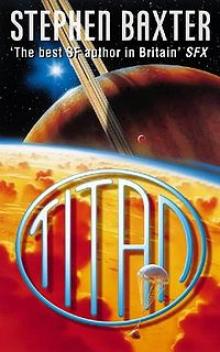 Titan n-2
Titan n-2 Newton's Aliens: Tales From the Anti-Ice Universe
Newton's Aliens: Tales From the Anti-Ice Universe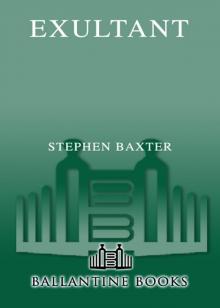 Exultant
Exultant Manifold: Origin
Manifold: Origin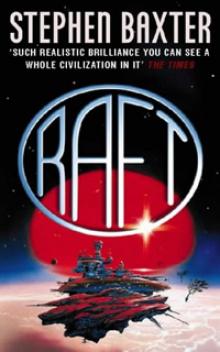 Raft xs-1
Raft xs-1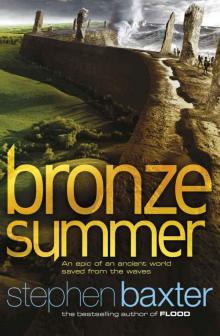 Bronze Summer n-2
Bronze Summer n-2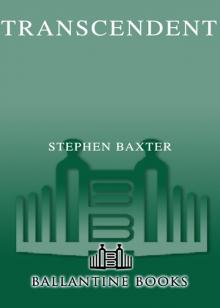 Transcendent
Transcendent Stone Spring
Stone Spring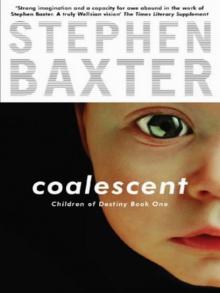 Coalescent
Coalescent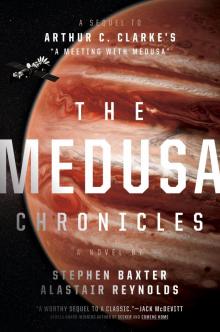 The Medusa Chronicles
The Medusa Chronicles Origin m-3
Origin m-3 Silverhair tm-1
Silverhair tm-1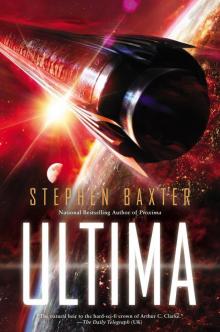 Ultima
Ultima Voyage n-1
Voyage n-1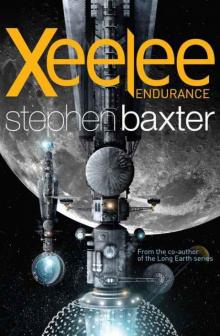 Xeelee: Endurance
Xeelee: Endurance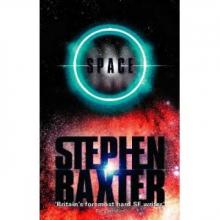 Space m-2
Space m-2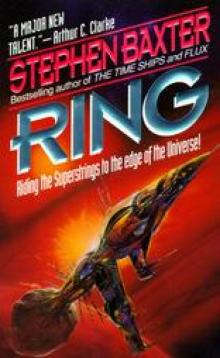 Ring xs-4
Ring xs-4 Raft
Raft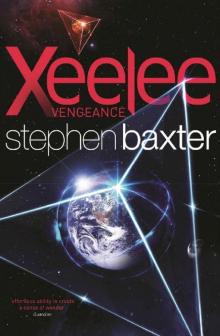 Xeelee: Vengeance
Xeelee: Vengeance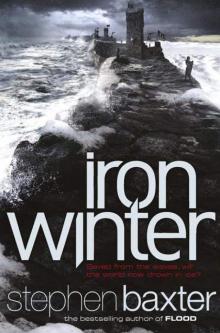 Iron Winter n-3
Iron Winter n-3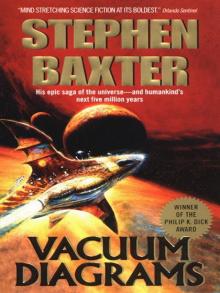 Vacuum Diagrams
Vacuum Diagrams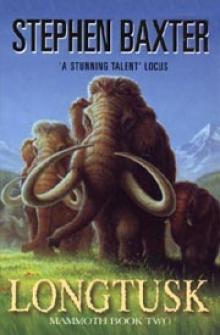 Longtusk tm-2
Longtusk tm-2 Proxima
Proxima Evolution
Evolution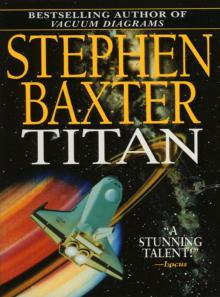 Titan
Titan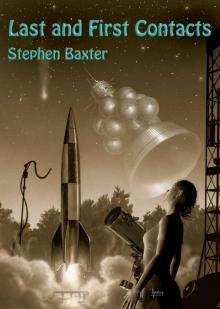 Last and First Contacts (Imaginings)
Last and First Contacts (Imaginings) Emperor
Emperor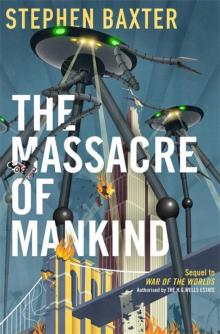 The Massacre of Mankind
The Massacre of Mankind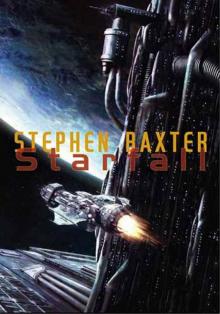 Starfall
Starfall Doctor Who - The Wheel of Ice
Doctor Who - The Wheel of Ice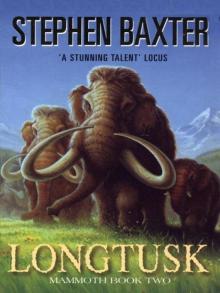 Longtusk
Longtusk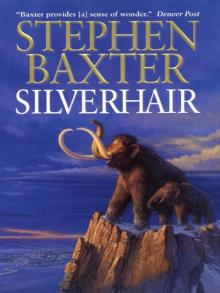 Silverhair
Silverhair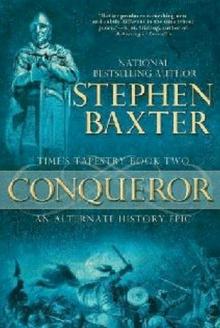 Conqueror tt-2
Conqueror tt-2 Flood
Flood Flood f-1
Flood f-1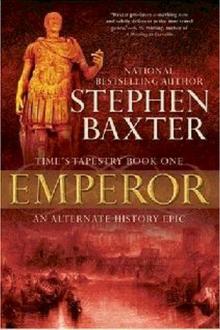 Emperor tt-1
Emperor tt-1 Moonseed
Moonseed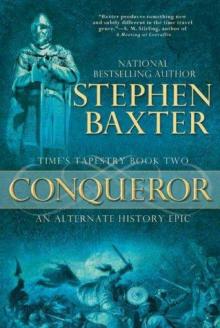 Conqueror
Conqueror Timelike Infinity xs-2
Timelike Infinity xs-2 The Ghost Pit
The Ghost Pit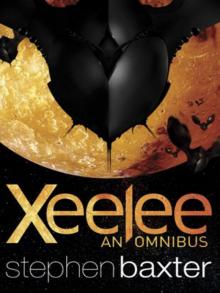 Xeelee: An Omnibus: Raft, Timelike Infinity, Flux, Ring
Xeelee: An Omnibus: Raft, Timelike Infinity, Flux, Ring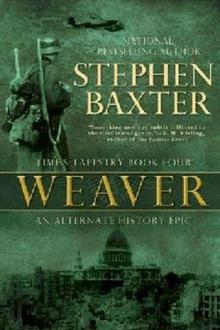 Weaver tt-4
Weaver tt-4 Landfall: Tales From the Flood/Ark Universe
Landfall: Tales From the Flood/Ark Universe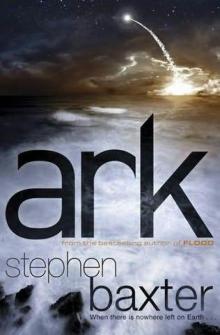 Ark
Ark Emperor: Time’s Tapestry Book One
Emperor: Time’s Tapestry Book One Space
Space Icebones
Icebones Manifold: Space
Manifold: Space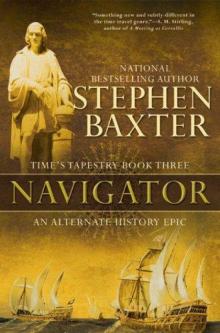 Navigator
Navigator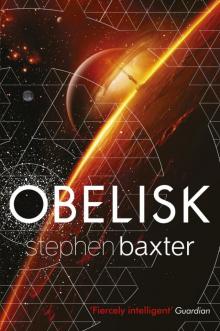 Obelisk
Obelisk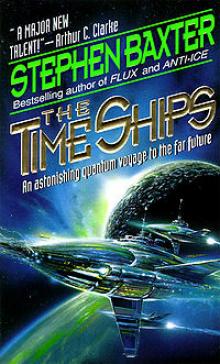 The Time Ships
The Time Ships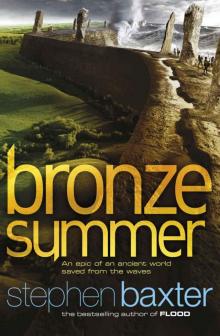 Bronze Summer
Bronze Summer Resplendent
Resplendent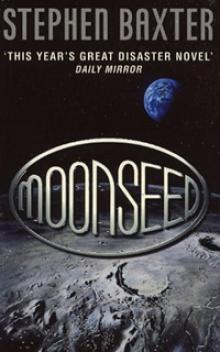 Moonseed n-3
Moonseed n-3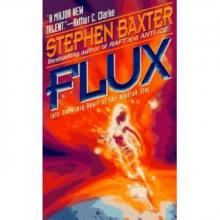 Flux xs-3
Flux xs-3 Transcendent dc-3
Transcendent dc-3 Icebones tm-3
Icebones tm-3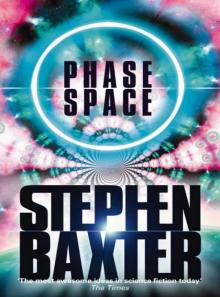 Phase Space
Phase Space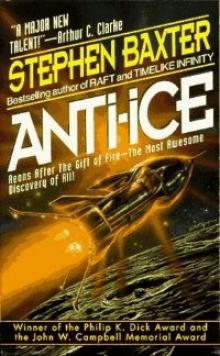 Anti-Ice
Anti-Ice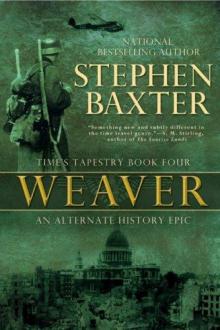 Weaver
Weaver Voyage
Voyage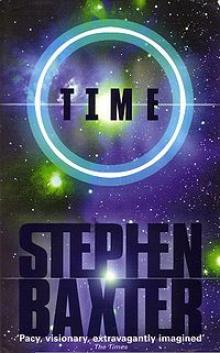 Time m-1
Time m-1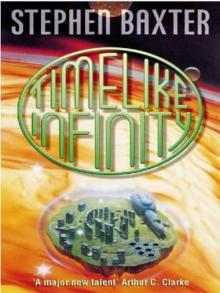 Timelike Infinity
Timelike Infinity Exultant dc-2
Exultant dc-2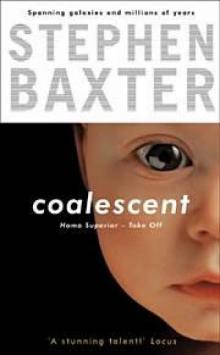 Coalescent dc-1
Coalescent dc-1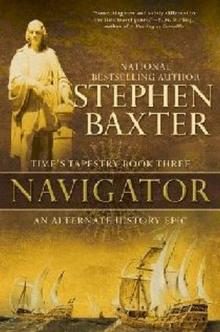 Navigator tt-3
Navigator tt-3